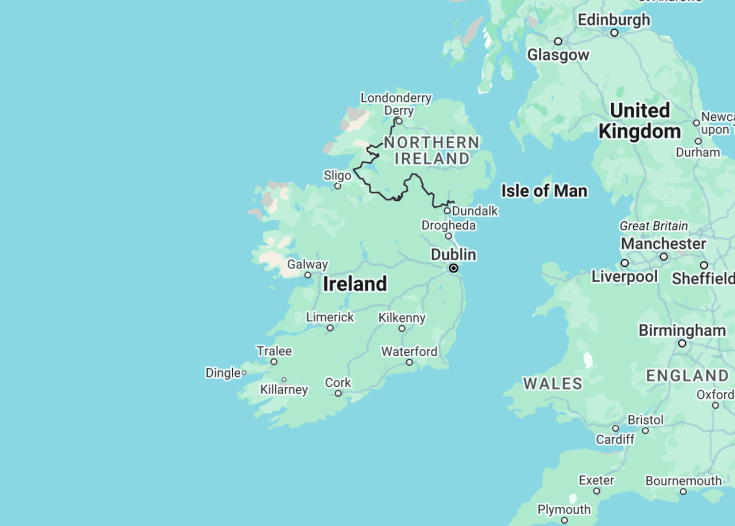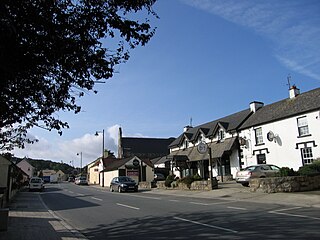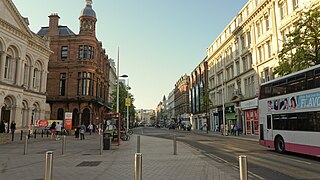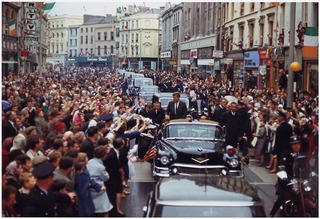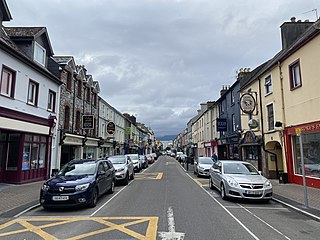Ireland, known as the Emerald Isle, is a captivating destination renowned for its stunning landscapes, rich history, and warm hospitality. With its rolling green hills, ancient castles, and vibrant cities, Ireland offers a wealth of experiences for travelers. Explore the lush countryside, hike along breathtaking coastal cliffs, indulge in traditional Irish cuisine, and immerse yourself in the country’s captivating cultural heritage.
Plan your visit during St. Patrick’s Day to experience the country’s famous parades and celebrations.
Don’t miss the chance to visit the iconic Cliffs of Moher, one of Ireland’s most breathtaking natural wonders.
Top destinations in Ireland
Ireland: The Emerald Isle
| Capital | Dublin |
| Time in Ireland | GMT |
| Language spoken | English, Irish |
| Population | 4,937,786 (World Bank, 2020) |
| Religion | Roman Catholic (78.3%) Church of Ireland (2.7%) Other Christian (1%) Other Religions (1.6%) |
| Currency | Euro (€, EUR) |
| Airports | Dublin Airport Cork Airport Shannon Airport |
Ireland, often referred to as the Emerald Isle, is a country with a rich history and stunning landscapes. It is located in Northwestern Europe and is famous for its lush green countryside, ancient castles, and vibrant culture.
Where is Ireland located?
Ireland is an island located in Northwestern Europe. It is bordered by the Atlantic Ocean to the west and the Irish Sea to the east. It is divided into two separate political entities: the Republic of Ireland, which covers about five-sixths of the island, and Northern Ireland, which is part of the United Kingdom.
What is Ireland famous for?
Ireland is famous for its stunning natural beauty, including its rolling green hills, rugged coastline, and picturesque lakes. It is also renowned for its rich cultural heritage, which includes traditional music, dance, and storytelling. Ireland is home to many ancient castles, such as the iconic Blarney Castle and the medieval fortress of Bunratty Castle. Additionally, Ireland is known for its warm and welcoming hospitality, making it a popular destination for tourists from around the world.
History
The history of Ireland dates back to ancient times, with evidence of human settlements on the island as early as 10,000 BC. However, the recorded history of Ireland begins with the arrival of the Celts in the 4th century BC. These Celtic tribes established a distinct culture, language, and social structure on the island, setting the stage for Ireland’s unique history.
Prehistoric Ireland: 10,000 BC – 4th century BC
During the prehistoric era, Ireland was inhabited by early hunter-gatherer communities. These communities left behind the remains of stone tools, megalithic tombs, and ancient ceremonial sites, such as Newgrange and Knowth, which still stand today. The prehistoric people of Ireland lived in harmony with the land and had a deep connection to nature.
Celtic Ireland: 4th century BC – 5th century AD
The arrival of the Celts in Ireland marked a significant turning point in the island’s history. The Celts brought with them their language, Gaelic, as well as new customs and religious beliefs. They established a hierarchical society with kings and warriors ruling over the clans. The Celtic period of Ireland saw the rise of powerful kingdoms, such as the Kingdom of Ulster and the Kingdom of Connacht.
Christian Ireland: 5th century AD – 12th century AD
The introduction of Christianity in the 5th century AD had a profound impact on Ireland. Saint Patrick, the patron saint of Ireland, is credited with bringing Christianity to the island. Monasteries were founded, and Irish monks became renowned for their scholarship and missionary work. These monastic communities preserved much of Ireland’s ancient knowledge and literature, even as external threats began to emerge.
Viking and Norman Invasions: 8th century AD – 12th century AD
The Viking raids of the 8th and 9th centuries AD brought a new wave of invaders to Ireland. These Norsemen established trading settlements and formed alliances with local Irish kings. However, the Vikings faced resistance from Irish leaders such as Brian Boru, who eventually defeated them at the Battle of Clontarf in 1014.
In the 12th century, the Normans invaded Ireland under the leadership of Strongbow. They established the Lordship of Ireland and brought about significant political and social changes. The Normans introduced feudalism and exerted control over the native Irish population.
English Rule and Irish Resistance: 12th century AD – 20th century AD
In the following centuries, English rule became increasingly dominant in Ireland. The English Crown sought to exert control over the island, leading to conflicts and resistance from the Irish. The Gaelic lords and clans fought against English supremacy, with notable rebellions such as the Nine Years’ War (1594–1603) and the 1798 Rebellion.
Ireland also experienced waves of immigration, particularly during the Great Famine in the mid-19th century. The famine, caused by the failure of the potato crop, devastated the population and led to mass emigration to other countries, particularly the United States.
Independence and Troubles: 20th century AD – present
In the early 20th century, Ireland fought for independence from British rule. The Easter Rising of 1916 marked a significant moment in the struggle for freedom. Eventually, in 1922, the Anglo-Irish Treaty established the Irish Free State, which later became the Republic of Ireland.
Ireland has faced its challenges in the modern era, including the Northern Ireland conflict, also known as the Troubles, which spanned from the late 1960s to 1998. The Troubles were a period of political and sectarian violence between nationalists and unionists, resulting in thousands of deaths and injuries.
Despite its turbulent past, Ireland has emerged as a vibrant and prosperous nation. Today, it is known for its rich cultural heritage, stunning landscapes, and friendly people. Ireland continues to evolve and embrace its unique history while looking towards the future.
Visit Ireland
What to see and do in Ireland
When visiting Ireland, there are many must-see attractions and activities that showcase the country’s natural beauty, historical sites, and vibrant culture. Here are some of the top things to see and do in Ireland:
- Explore the stunning landscapes of the Ring of Kerry and the Cliffs of Moher.
- Visit ancient historical sites such as Newgrange, the Rock of Cashel, and the Giant’s Causeway.
- Immerse yourself in Irish folklore and mythology at places like the Hill of Tara and the Boyne Valley.
- Take a tour of Dublin’s historic landmarks, including Trinity College, Dublin Castle, and St. Patrick’s Cathedral.
- Experience traditional Irish music and dance at a pub or during a live performance.
- Enjoy outdoor activities such as hiking in the Wicklow Mountains, golfing on world-class courses, and fishing in scenic rivers and lakes.
- Indulge in the flavors of Ireland with a visit to a whiskey distillery, a brewery, or a traditional Irish pub.
- Attend cultural festivals and events, such as St. Patrick’s Day celebrations, traditional music festivals, and literary festivals.
These are just a few highlights of what Ireland has to offer. The country is full of hidden gems, charming towns, and breathtaking landscapes that are waiting to be discovered.
Events in Ireland
Ireland hosts a rich variety of events throughout the year, showcasing its culture, history, and traditions. Here are some of the notable events that take place in Ireland:
- St. Patrick’s Festival (March): Celebrated in honor of Ireland’s patron saint, this festival features parades, music, dance performances, and cultural events across the country.
- Galway International Arts Festival (July): This renowned arts festival showcases the best of Irish and international art, theater, music, and literature in the vibrant city of Galway.
- Dublin Horse Show (August): Held at the Royal Dublin Society, this event is one of Ireland’s premier equestrian competitions, featuring show jumping, dressage, and entertainment for all ages.
- Cork Jazz Festival (October): Jazz enthusiasts flock to the city of Cork for this annual festival, which features live performances by national and international jazz musicians.
- Wexford Festival Opera (October/November): Opera lovers come from far and wide to attend this prestigious opera festival, showcasing world-class performances in the town of Wexford.
- New Year’s Festival Dublin (December): Ireland’s capital city comes alive with fireworks, live music, and festivities to welcome the new year.
These events offer a glimpse into Ireland’s vibrant arts scene, musical heritage, and cultural traditions. Whether you’re interested in music, arts, sports, or history, Ireland has something for everyone.
Best time to visit Ireland
The best time to visit Ireland is during the summer months of June, July, and August, when the weather is generally the warmest and the days are long. This is also when most outdoor festivals and events take place across the country, offering a vibrant atmosphere and a chance to experience Irish culture at its best.
However, Ireland’s weather can be unpredictable, even in the summer months, so it’s advisable to pack layers and be prepared for some rain. The spring and autumn months of April, May, September, and October can also be a good time to visit, as the crowds are smaller and the landscapes are often at their most beautiful.
Winter in Ireland, from November to February, is a quieter time to visit but can be quite cold and damp, with shorter days. However, this time of year can also offer a chance to experience the cozy warmth of traditional Irish pubs and enjoy cultural events such as Christmas markets and music festivals.
Ultimately, the best time to visit Ireland depends on your personal preferences and what you want to experience during your trip. Each season offers its own unique charm, so it’s worth considering what you prioritize – whether it’s sunny days for outdoor activities or a quiet getaway to enjoy Ireland’s cozy atmosphere.
Is Ireland worth visiting?
Ireland is most definitely worth visiting. It is a country steeped in history and culture, with breathtaking landscapes, vibrant cities, and warm-hearted people. From ancient historical sites to lively pubs, Ireland offers a wide range of experiences that cater to all interests.
The country’s unique blend of Celtic heritage, folklore, and tradition is palpable in every corner. Ireland’s rich literary history, with renowned authors such as James Joyce, Oscar Wilde, and W.B. Yeats, is celebrated throughout the country with literary festivals and landmarks.
Additionally, Ireland’s stunning natural beauty is a major draw for tourists. From the iconic Cliffs of Moher to the peaceful lakes of Connemara, the landscapes of Ireland capture the imagination and offer endless opportunities for exploration and outdoor activities.
That being said, Ireland is not without its flaws. The weather can be unpredictable, and the crowds in popular tourist areas can be overwhelming at times. Additionally, some visitors may find the cost of accommodation and dining on the higher side.
However, these minor concerns should not deter anyone from visiting Ireland. The country’s charm, friendliness, and unique cultural experiences far outweigh any drawbacks. Whether you’re a history buff, a nature lover, or simply seeking a warm and welcoming destination, Ireland is sure to leave a lasting impression.
Common questions
What are the top tourist attractions in Ireland?
- The Cliffs of Moher – a breathtaking coastal area known for its dramatic cliffs and stunning views.
- The Ring of Kerry – a scenic drive that takes you through picturesque landscapes, charming villages, and historic sites.
- Giant’s Causeway – a unique geological formation consisting of thousands of interlocking basalt columns.
- Blarney Castle – famous for the Blarney Stone, which is said to grant the gift of eloquence to those who kiss it.
- Trinity College Dublin – Ireland’s oldest university, home to the Book of Kells and beautiful campus grounds.
- Guinness Storehouse – a must-visit for beer enthusiasts, offering interactive exhibits and panoramic views of Dublin.
- Kilmainham Gaol – a former prison turned museum, providing insight into Ireland’s history and struggle for independence.
- Rock of Cashel – an impressive medieval fortress perched on a hill, featuring ancient ruins and stunning views.
- The Blasket Islands – a group of rugged islands off the coast of County Kerry, known for their natural beauty and rich cultural heritage.
- The Dingle Peninsula – a scenic peninsula with charming towns, sandy beaches, and breathtaking coastal views.
- Glendalough – a serene valley in the Wicklow Mountains, home to ancient monastic ruins and beautiful hiking trails.
- Killarney National Park – a stunning park encompassing lakes, mountains, and woodlands, perfect for outdoor activities and wildlife spotting.
What is the weather like in Ireland?
What is the best time to visit Ireland?
What is traditional Irish cuisine like?
- Irish stew – a flavorful dish made with lamb or beef, potatoes, onions, and other vegetables.
- Boxty – a traditional potato pancake that can be served with a variety of fillings.
- Coddle – a Dublin specialty made with sausages, bacon, potatoes, and onions.
- Colcannon – mashed potatoes with cabbage or kale, often served with butter.
- Soda bread – a simple bread made with flour, baking soda, buttermilk, and salt.
- Guinness beef stew – a rich and flavorful stew made with beef, Guinness stout, and root vegetables.
- Seafood chowder – a creamy soup made with fresh seafood, potatoes, and vegetables.
While traditional Irish cuisine has its own charm, Ireland also offers a vibrant food scene with international influences and a wide range of dining options to suit different tastes.
What are the most popular traditional Irish music instruments?
- Tin whistle – a small wind instrument that produces sweet, high-pitched notes.
- Fiddle – a bowed string instrument similar to a violin, often played with fast and intricate melodies.
- Uilleann pipes – a complex bagpipe instrument that can produce a range of tones and expressive melodies.
- Bodhrán – a round drum played with a wooden beater, providing rhythmic accompaniment.
- Accordion – a versatile instrument that can create both melodic and harmonic sounds.
- Concertina – a small, portable bellows-driven instrument similar to an accordion.
- Bouzouki – a string instrument with a long neck and a flat back, adding a distinctive rhythm to traditional Irish music.
These instruments, along with various others, create the lively and soulful melodies that are characteristic of Irish traditional music.
What are some outdoor activities to do in Ireland?
- Hiking – Ireland boasts numerous hiking trails, such as the Wicklow Way and the Burren Way, that showcase the country’s natural beauty.
- Cycling – There are many scenic cycling routes, including the Great Western Greenway and the Ring of Kerry, that allow you to explore the countryside at your own pace.
- Golfing – Ireland is renowned for its world-class golf courses, including Royal County Down and Old Course at Ballybunion, providing unforgettable golfing experiences.
- Surfing – The Atlantic coastline offers fantastic surfing spots, such as Bundoran in County Donegal and Lahinch in County Clare, attracting surfers of all skill levels.
- Kayaking – Explore Ireland’s lakes, rivers, and coastal waters by kayaking, with options available for both beginners and experienced paddlers.
- Fishing – Ireland’s rivers and lakes are teeming with fish, making it an ideal destination for fishing enthusiasts.
- Rock climbing – The rugged cliffs of Ireland, including those at Fair Head and the sea stacks of Donegal, provide thrilling rock climbing experiences.
- Wildlife spotting – Ireland’s diverse habitats support a variety of wildlife, and you can observe seals, dolphins, puffins, and more in their natural habitats.
Whether you prefer an adrenaline rush or a tranquil retreat in nature, Ireland offers something for every outdoor adventurer.
What are some Irish cultural festivals and events?
- St. Patrick’s Festival (March) – The largest cultural festival in Ireland, featuring parades, concerts, dance performances, and various activities to celebrate Irish culture and heritage.
- Galway International Arts Festival (July) – A vibrant arts festival showcasing a diverse range of performances, including theater, music, visual arts, and street performances.
- Fleadh Cheoil na hÉireann (August) – The world’s largest celebration of Irish traditional music, dance, and culture, attracting musicians and performers from around the globe.
- Bloomsday Festival (June) – A celebration of James Joyce’s novel “Ulysses,” with literary events, performances, walking tours, and reenactments taking place in Dublin.
- Cork Jazz Festival (October) – A renowned jazz festival featuring performances by international and local jazz artists in various venues across Cork city.
- Dublin Theatre Festival (September/October) – A showcase of Irish and international theater productions, including plays, musicals, and experimental performances.
- W.B. Yeats International Summer School (July) – A literary festival dedicated to the life and works of renowned poet W.B. Yeats, offering lectures, workshops, and readings.
These festivals and events provide unique opportunities to immerse yourself in Irish culture and experience the vibrancy of the country’s artistic and literary scenes.
What are some notable Irish literary figures and works?
- James Joyce – Known for his complex and experimental writing style, Joyce’s works include “Ulysses,” “Dubliners,” and “A Portrait of the Artist as a Young Man.”
- W.B. Yeats – A Nobel laureate, Yeats was a prominent poet and playwright whose notable works include “The Tower,” “The Wild Swans at Coole,” and “Easter, 1916.”
- Oscar Wilde – Famous for his wit and flamboyant personality, Wilde’s works include plays like “The Importance of Being Earnest” and “The Picture of Dorian Gray,” a novel.
- Seamus Heaney – A Nobel laureate, Heaney was known for his lyrical poetry inspired by Irish landscapes and history, with notable works such as “Death of a Naturalist” and “North.”
- Samuel Beckett – Celebrated for his absurdist plays, Beckett’s notable works include “Waiting for Godot” and “Endgame,” which depict existential themes and the human condition.
- Bram Stoker – Known for his Gothic horror novel “Dracula,” Stoker’s work has had a lasting impact on popular culture and the horror genre.
These literary figures and their works have made significant contributions to the world of literature and continue to be celebrated in Ireland and beyond.
What are some traditional Irish crafts and souvenirs?
- Aran sweaters – Hand-knit sweaters made from untreated wool, featuring intricate patterns that represent different Irish clans.
- Belleek pottery – Fine china pottery known for its delicate appearance, often featuring intricate floral designs and a distinctive creamy color.
- Irish crystal – Beautifully cut crystalware, including glasses, vases, and decorative items, known for its clarity and brilliance.
- Claddagh rings – Traditional Irish rings that symbolize love, friendship, and loyalty, with a design featuring two hands holding a heart topped with a crown.
- Bog oak sculptures – Unique sculptures carved from ancient oak preserved in Irish bogs for thousands of years.
- Turf or peat products – Souvenirs made from locally sourced turf or peat, including decorative items, jewelry, and even peat for burning.
- Handmade pottery – From traditional style pottery to contemporary designs, Irish artisans create a wide range of ceramics and pottery.
These traditional crafts and souvenirs provide a memorable way to bring a piece of Ireland’s culture and heritage home with you.
What are some famous Irish castles to visit?
- Bunratty Castle – A well-preserved medieval fortress in County Clare, featuring a folk park and medieval banquets.
- Blarney Castle – Known for the Blarney Stone, visitors can climb to the top and kiss the stone for the gift of eloquence.
- Ashford Castle – A luxurious castle hotel located on the shores of Lough Corrib, offering elegant accommodations and scenic views.
- Dunluce Castle – A dramatic cliffside ruin in Northern Ireland, known for its stunning location and rich history.
- Malahide Castle – A picturesque castle near Dublin, surrounded by beautiful gardens and parkland.
- Trim Castle – One of the largest Norman castles in Ireland, located in County Meath and featured in the film “Braveheart.”
- Kilkenny Castle – A magnificent castle in Kilkenny city, featuring beautiful gardens and art exhibitions.
- Rock of Cashel – A striking medieval fortress situated on a rocky outcrop, adorned with ancient ruins and stunning views.
- Kylemore Abbey – A breathtaking castle turned abbey in Connemara, known for its picturesque setting and stunning Victorian architecture.
These castles offer a glimpse into Ireland’s storied past and provide an opportunity to explore their grandeur and historical significance.
What are some famous Irish myths and legends?
- The Legend of the Giant’s Causeway – According to legend, the Giant’s Causeway was created by the giant Finn McCool, who built the giant stepping stones to face his Scottish rival.
- The Story of the Banshee – The Banshee is a mythical female spirit said to wail and foretell death. Her mournful cry is said to bring a sense of foreboding.
- The Children of Lir – This tragic myth tells the story of four children who were turned into swans and forced to spend centuries in various bodies of water across Ireland.
- The Cú Chulainn Saga – Cú Chulainn is a legendary warrior known for his incredible feats of strength and bravery. His stories are an essential part of Irish mythology.
- Tír na nÓg – Tír na nÓg is the land of eternal youth and beauty in Irish mythology. It is said to be a mystical realm where time stands still.
- The Salmon of Knowledge – In this legend, a salmon possesses all the world’s knowledge. It is caught and cooked by the wise poet Fionn mac Cumhaill.
- The Legend of the Claddagh Ring – The Claddagh Ring, a traditional Irish ring, is said to have originated from a local fisherman who was captured and enslaved. He crafted the ring as a symbol of love and friendship.
These myths and legends add to the rich folklore and storytelling tradition of Ireland, capturing the imagination of visitors and locals alike.









